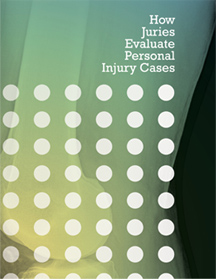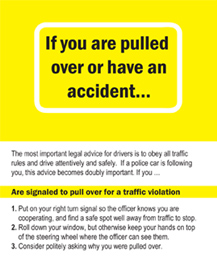Tips for testifying
These tips were developed by experienced trial lawyers, after years of trial experience, based on what their clients told them, and what they have seen in depositions. Witnesses say if they follow these “pointers” everything is fine, and they feel good about their testimony. Read these “pointers” today. Read them tomorrow. Read them the day before your deposition.
Why We Give This to You
We want the jury to know the true facts of the case that you know. That is the reason we give this to you. We want you to avoid the tricks the other side may play to try to distract the jury from the truth that you can provide the jury. We want the jury to know the facts that you have, and we want you to leave feeling good about the service you have given to the jury.
A Way to Feel Good Sitting Down for an Hour or More to Answer Questions
The time will seem to go fast, but really it often takes more than an hour or two. The first rule is that you are in charge of yourself. If you want to take a break to go to the bathroom, say you want a break. (No one can pay full attention to what people are saying if they have a full bladder.) If you want a drink of water, or just to stand up to stretch your legs, say so. You are in control of those things. You ask, and everybody has to stop for you. That is just fine.
The next rule that will make you feel good is to sit in the “Power Position.” Practice it. Sit about three quarters of the way back on the seat of the chair. Then lean back against the chair back. Then put your hands on the arms of the chair.
You are now in the “Power Position.”
You will see professionals in TV interviews doing this Power Position, because it looks powerful and relaxed. The slight lean back into the chair back, with visible hands resting on the chair arms, is the most relaxed and powerful posture, and it keeps you from putting your hands to your face or other gestures that look tense.
And there is another benefit of the “Power Position.” It is the best way to sit for long periods of time and not get tired.
Try the Power Position right now and several times a day:
-
Sit about three quarters of the way back on the seat of the chair.
Then lean back against the chair back.
Then put your hands on the arms of the chair.
There you are!
TEN POINTERS FOR WITNESSES
1. TELL THE TRUTH. No lawyer can cross up a truthful person who listens to the questions. If you do not know the answer, you can say, “I do not know.” You can get in trouble if you just take a guess. For example, if you did not actually see Mary talk to Bill, do not say, “Mary talked to Bill.” Maybe you assume that because Mary said so, but make it clear then by saying, “Mary said she talked to Bill.”
If you do not know exactly, but you do know an estimate, say so. For example, if you were asked how long it takes you to drive from home to work and you answered, “I do not know,” people would think you were stupid or a liar. But if you answered, “I do not know exactly, but I would estimate about 20 to 30 minutes,” then you have told the truth and given a helpful answer to the jury.
If a question cannot be truthfully answered the way the question is worded, say so.
“Your spouse is not truthful — and some lawyers can ask five-minute long questions before they get to the end of the questions, so no one understands the questions, isn’t that right?” Read that back to yourself. That double-barreled question is an example of how there can be things you just cannot answer so everyone will understand what you are saying. The question just asked is worded so that if you answer, no one would know if you are agreeing about your spouse or about long questions or both.
If the question is confusing or can be taken two ways, answer that “I do not understand the question.”
2. SLOW DOWN — LISTEN TO THE QUESTION. You can’t give an accurate answer unless you understand the question. Be sure you understand the question before you attempt to give an answer. Listen carefully to each question. If the question can be interpreted in a couple of different ways, say you don’t understand the question. Know the question.
There is no need for you to be a “machine gun” rattling back answers. Give the question some thought and then answer it. Give each question some thought and then answer it.
3. KEEP YOUR ANSWER SHORT.
The average person pays attention for only 90 seconds. Out of every 100 people, 50 want to hear only about 30 seconds at a time.
Most commercials are only 30 seconds long, because experts know that the average listener only listens to the first 30 seconds and then starts to “tune out.” The reason there are two “anchor persons” on a TV news show is because they know no one should talk more than 30 seconds at a time if they want everyone to hear what they say.
So “keep it short.” Just answer the question as short as you can and stop talking. If someone asks what you did after you woke up in the morning, tell them you got out of bed, and stop. Don’t ramble on to tell us everything you did for the rest of the day. The jury does not want to know everything you know. They just want to know what is necessary to decide the case. Never miss a chance to stop talking!
Answer the actual question directly and to the point. Then stop. (The other lawyer may want you to ramble, but resist the temptation.) Your lawyer will ask you more questions if you should say more.
4. DO NOT WORRY. You will forget something. Your lawyer will ask you about anything you forgot to say that the jury needs to know.
5. NOBODY CAN CROSS YOU UP IF YOU LISTEN TO THE QUESTIONand answer only that exact question. If the question is just simply wrong, or shades things incorrectly, ask for the question to be changed so you understand it, or make the clarification yourself. For example, if you have testified that “It was about 50 feet long,” some lawyer may say 15 minutes later: “You mentioned that it was less than 50 feet long, and now would you tell us what color it was?” If you answer with a color, the jury may think you testified it was less than 50 feet long. So, your answer should be: “Mr. Attorney, I did not say it was less than 50 feet long; I said it was about 50 feet long. Now is your question what color it was?”
6. TELL IT WITH CONFIDENCE. Do you want people to believe you? There are two ways to tell the truth. One way is in a low voice, in a halting, hesitant manner, which makes the jury doubt that you are telling the facts. The other way is in a confident voice and positive manner, which makes the jury have faith in what you say. So talk with energy! Tell it with ENERGY!
7. DON’T GET DISTRACTED BY PAPERS THAT MAY BE PUT DOWN IN FRONT OF YOU.
Remember what you see on TV newscasts. The newscasters know how to communicate information. Never look down at papers and answer at the same time. If you are looking down, the jury will lose eye contact with you, and it will be harder for them to pay attention to what you are saying.
Never look at papers if an attorney is asking you a question. Listen to the question! You cannot pay full attention to the question if you are looking at papers. In fact, some lawyers try to trick you into not listening fully by putting papers down in front of you, and hoping you pay more attention to the papers than to the exact words of the question they are asking.
Listen to the question. Then look at the record or your papers if you want to. Then look back at the attorney to answer the question.
8. YOU CAN LOOK AT PICTURES OR PAPERS IF YOU WANT TO BE EXACTLY RIGHT BEFORE ANSWERING. If you want, you can look at any record or at pictures to be sure of what you are saying. But do not look at records or photos and talk at the same time. Do NOT just read from a paper. Everyone then thinks you have no memory at all!
9. ANSWER THE ACTUAL QUESTION; ANSWER IT DIRECTLY, AND THEN STOP. You need to know what the actual question is. Some lawyers will deliberately ask you two questions as if they were one question, so that you will be “wrong” if you just answer the last part of what they say. Or others will say something that is wrong as if it were a statement, and then ask you a question. So you have to listen and be sure what the actual question is before you start talking. You have a right to say that you do not understand the question or cannot answer it the way it is worded.
You need to stop talking as quickly as you can because:
The jury does not want to know everything you ever learned about the subject.
They only want to know your answer to the question.
10. SPEAK CONFIDENTLY. This is important. Everybody wants to hear you. They cannot believe you if they cannot hear you. Most people believe people who tell things strongly! Most people do not believe people who do not care enough to speak up so everyone can hear them. So speak up! One way to be sure you are speaking loudly enough is to look at the wall behind the attorney asking you the question and talk like you were talking to the wall behind the attorney. Do you want to be believed? Then — speak up! TALK LOUD! PUT OUT ENOUGH ENERGY!
SUMMARY
-
-Slow Down — Listen to the question.
-Answer the actual question, and stop.
-Talk with confidence.
-Tell the truth.
-Keep it short.
-Never miss a chance to stop talking!
Answering a question is a five-part process:
A. Listen to the question.
B. Wait for the lawyer to stop.
C. Then you stop and think what the actual question is.
If you do not understand it, say so.
D. Then you decide what the answer is to that actual question.
E. Then you answer.



